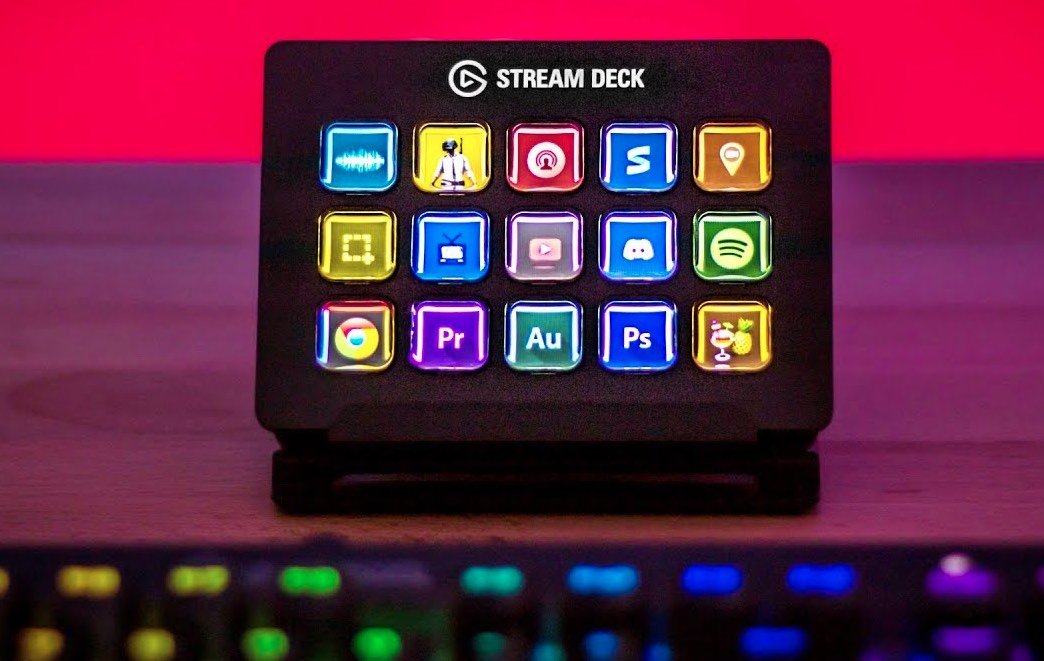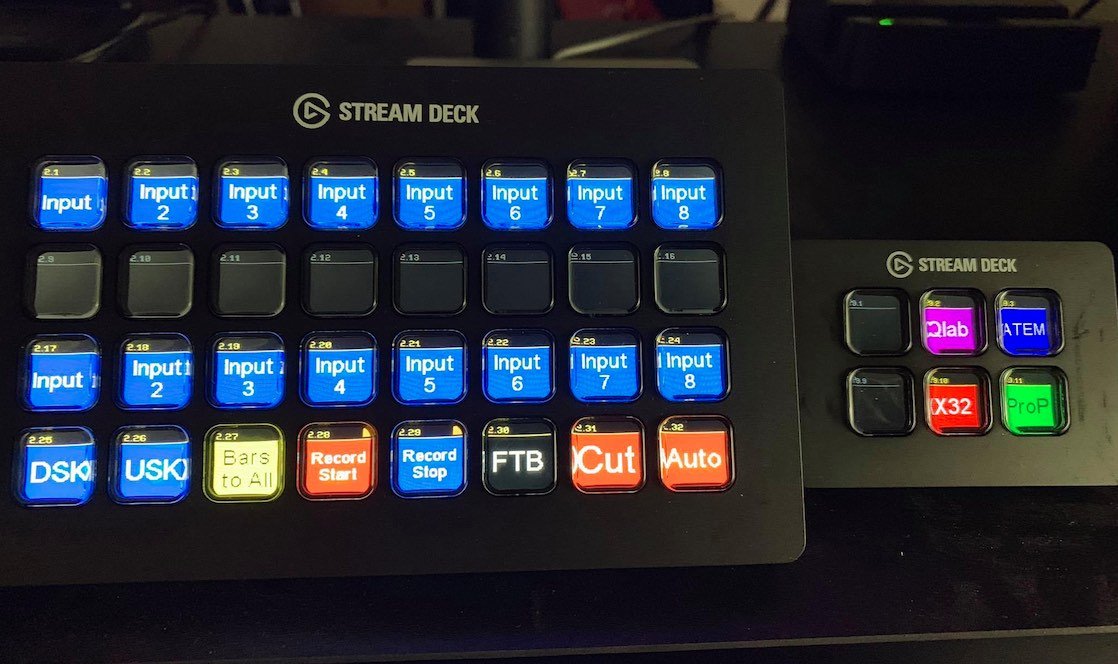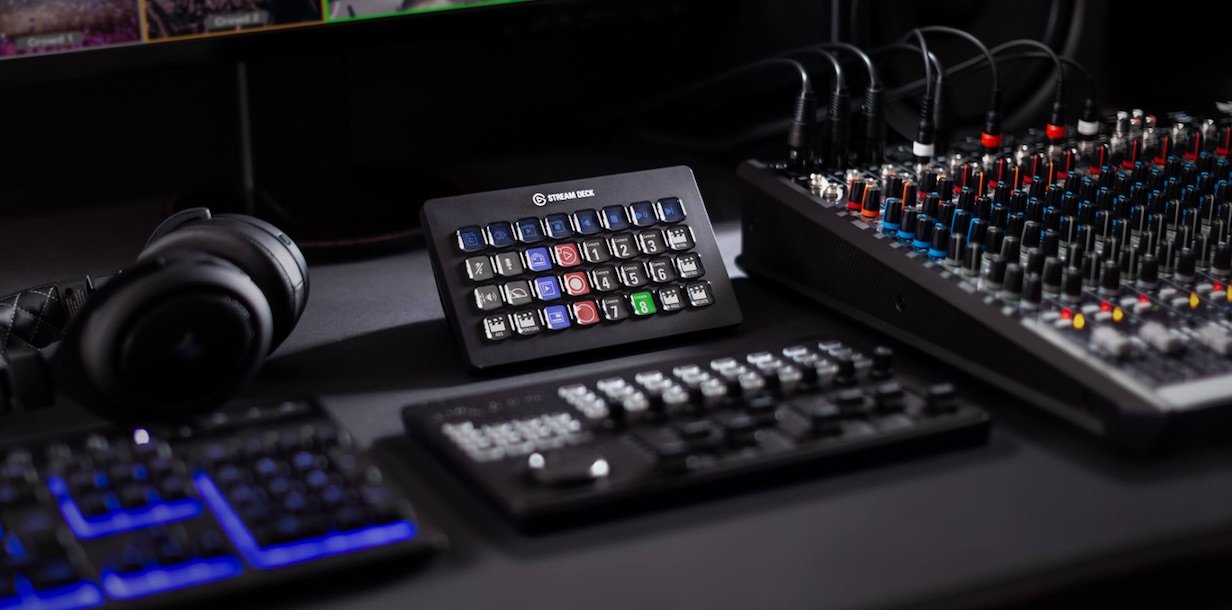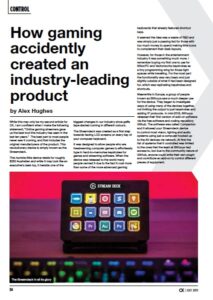News
25 Jul 2019
How gaming accidentally created an industry-leading product
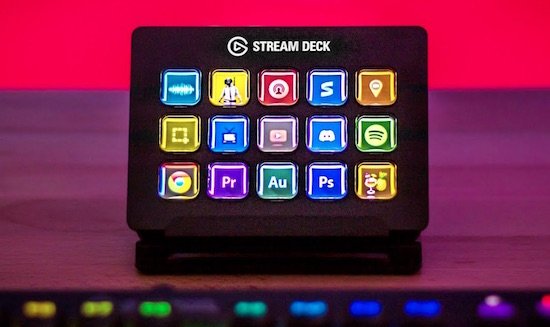
Subscribe to CX E-News
CONTROL
How gaming accidentally created an industry-leading product
by Alex Hughes.
While this may only be my second article for CX, I am confident when I make the following statement; “Online gaming streamers gave us the best tool this industry has seen in the last ten years.” The best part is most people never saw it coming, and that includes the original manufacturers of the product.
This revolutionary device is simply known as the Streamdeck.
This humble little device retails for roughly $250 Australian and while it may look like an executive’s desk toy, it heralds one of the biggest changes in our industry since gaffa tape started coming in different colours.
The Streamdeck was created as a first step towards having LCD screens on every key of your computer keyboard. It was designed to allow people who are livestreaming computer games to effortlessly type in hard-to-memorise keystrokes for games and streaming software.
When the device was released to the world many people canned it due to the fact it cost more than some of the more advanced gaming keyboards that already featured shortcut keys. It seemed the idea was a waste of R&D and was simply just a passing fad for those with too much money to spend making little icons to complement their desk layouts.
However, for those in the entertainment industry it was something much more.
I remember buying my first one to use for MAonPC and Vectorworks keystrokes as a tiny programming wing for those tight spaces while travelling. For the most part the functionality was very basic and just slightly outside of what it had been designed for, which was replicating keystrokes and shortcuts.
Meanwhile in Europe, a group of people known as Bitfocus saw a much deeper use for the device. They began to investigate ways of using many of the devices together, not limiting the output to just keystrokes and adding IP protocols.
In mid-2018, Bitfocus released their first version of add-on software via the free software and coding repository Github. The software was called Companion and it allowed your Streamdeck device to control most vision, lighting and audio systems using just a computer hooked up to the AV devices via network.
At first the list of systems that it controlled was limited to the ones that the team at Bitfocus had access to, but due to the community nature of GitHub, anyone could write their own plugin and contribute an add-on to control different pieces of equipment.
Less than a year later, the list quickly grew from a couple of products to over 60 from the areas of lighting, vision, and audio, with the list growing every day. That list includes playback systems such as QLab and most lighting applications and consoles.
While the gamers thought the product was expensive, the production and AV industry saw this as a cost-effective way of controlling many devices at once. In early 2019 Corsair, the company that makes the Streamdeck, released an API that allowed the Companion software to natively interface with the device.
Corsair also listened to the demands for a larger device and the Stream Deck XL was released, featuring more buttons as well as a detachable cable.
I have spoken a lot about the history of the product and how it works, but I haven’t given a good use case. Depending on who you are, many things can be controlled or manipulated with it.
The example I always like to give is the video roll.
With all your devices networked, with a simple button press you can start Streamdeck XL the video playback
on a QLab or PVP machine, fade the lights on the Hog, MA or Chamsys lighting console, switch the input on the Analog Way or Blackmagic video switcher, then un-mute the playback audio channels on the Yamaha audio desk.
A second press of the button can reverse the process and you can even add in delay timings between cues. All these actions can be configured via the web interface that the Companion software comes with.
I’ve barely scratched the surface of what it is capable of. I could talk at great length about the other features such as two-way communication with programmers such as Stage Timer 2, allowing you to see how long is left on a timer right on the device or even how you can run the Streamdecks off a Raspberry Pi microcomputer, but I fear filling up the entire magazine with my gushing review of the device would make for a somewhat boring issue.
So consider this a piece of friendly advice to look and explore new options in not only this, but all the technology around you. This isn’t a paid advertisement, just a passionate user trying to get out to the technical world about a great piece of hardware that can save you a lot of time in your daily workflow.
Personally, I own two Streamdecks, although both were recently murdered by baggage handlers at Nadi international airport in Fiji, so make sure you get a nice carry case for them.
As always, I will be ranting at length about this topic and more on the Lighting Nerds podcast as well as in an upcoming ConsoleTraining video.
Lighting Nerds – http://lightingnerds.com
CX Magazine – July 2019 Entertainment technology news and issues for Australia and New Zealand – in print and free online www.cxnetwork.com.au
© CX Media
Subscribe
Published monthly since 1991, our famous AV industry magazine is free for download or pay for print. Subscribers also receive CX News, our free weekly email with the latest industry news and jobs.

